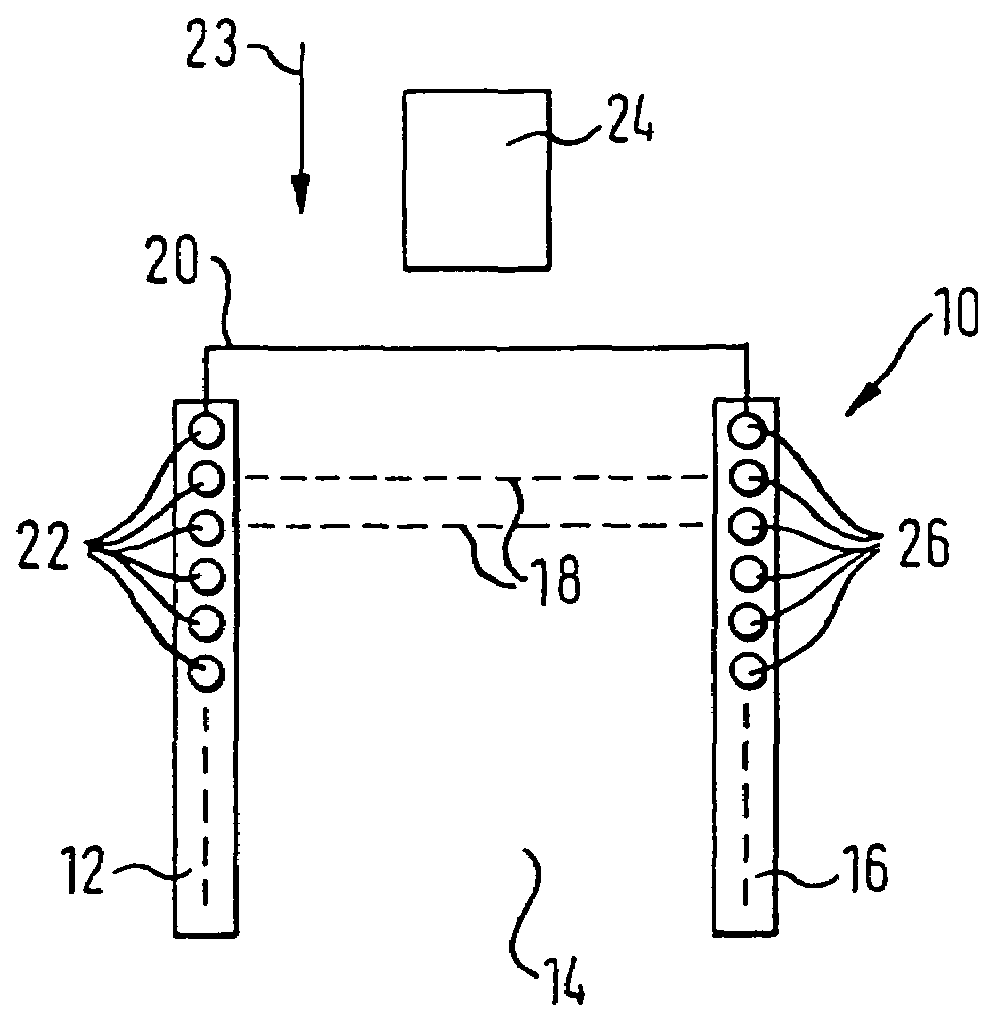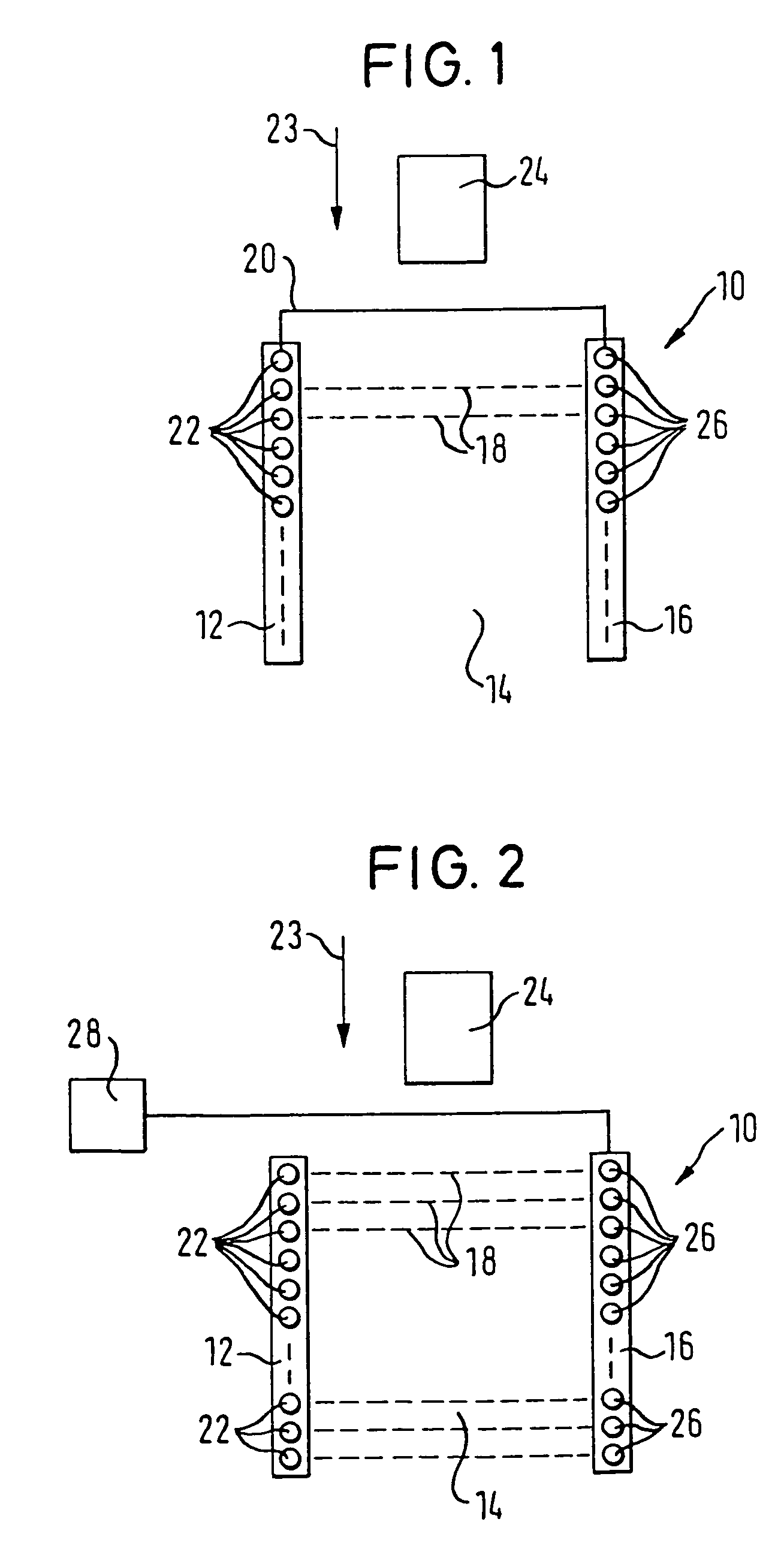Light grid for detecting objects in a monitoring region
a technology for monitoring regions and light grids, applied in the direction of optical detection, electric variable regulation, discharge tube incandescent screens, etc., can solve the problems of no synchronization, no protection against non-permitted intrusion, and interruption of light grid operation, etc., to achieve robust operation and simple manufacturing
- Summary
- Abstract
- Description
- Claims
- Application Information
AI Technical Summary
Benefits of technology
Problems solved by technology
Method used
Image
Examples
Embodiment Construction
[0024]A light grid 10 is shown in FIG. 1 that comprises a transmitter unit 12 and a receiver unit 16, between which a monitoring region 14 is defined. The transmission unit 12 consists of a plurality of light transmitters 22 arranged in a row, of which, however, only six light transmitters 22 are represented. The receiver unit 16 likewise consists of a plurality of light receivers 26 arranged in a row, of which likewise only six are shown.
[0025]The transmitter unit and the receiver unit 12, 16 are arranged parallel to the floor (not shown) of a production hall, with the floor extending parallel to the plane of the drawing. The length of the transmitter unit 12 and the receiver unit 16 is dimensioned such that, for example, an unrecognized passing through of the light grid 10 by persons is not possible. An approximate length of 900 mm has proved expedient in trials.
[0026]The transmitter unit 12 and the receiver unit 16 are arranged parallel to one another at an interval of around 3 t...
PUM
 Login to View More
Login to View More Abstract
Description
Claims
Application Information
 Login to View More
Login to View More - R&D
- Intellectual Property
- Life Sciences
- Materials
- Tech Scout
- Unparalleled Data Quality
- Higher Quality Content
- 60% Fewer Hallucinations
Browse by: Latest US Patents, China's latest patents, Technical Efficacy Thesaurus, Application Domain, Technology Topic, Popular Technical Reports.
© 2025 PatSnap. All rights reserved.Legal|Privacy policy|Modern Slavery Act Transparency Statement|Sitemap|About US| Contact US: help@patsnap.com


